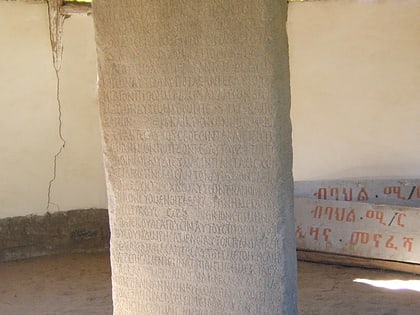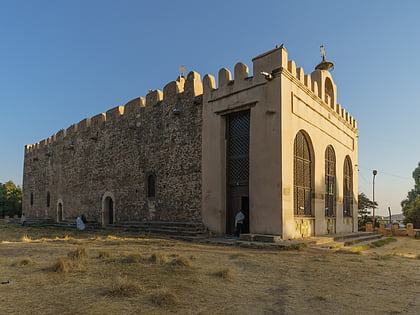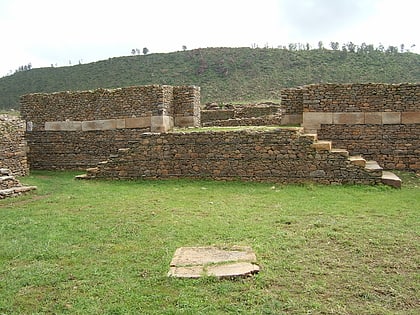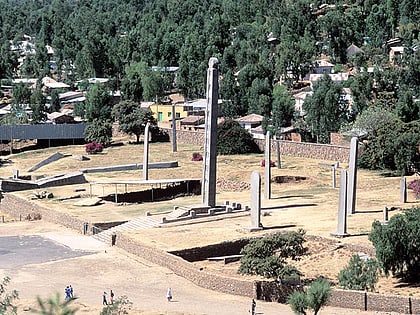Ezana Stone, Axum
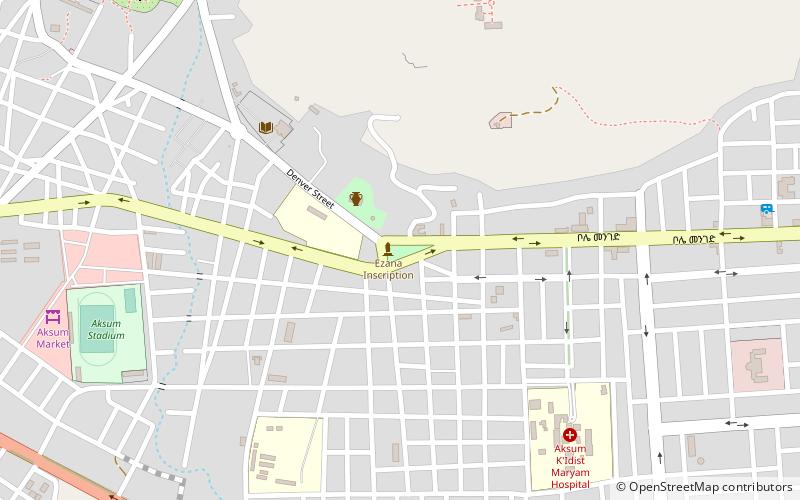

Facts and practical information
The Ezana Stone, nestled in the ancient city of Axum in Ethiopia, stands as a testament to the rich history of the Axumite Kingdom. This significant stela, inscribed in the 4th century AD, is a crucial artifact for understanding the cultural and linguistic heritage of Ethiopia.
Carved from a single piece of granite, the Ezana Stone is etched with inscriptions in three different scripts: Sabaean, Ge'ez, and Greek. This trilingual inscription has provided scholars with invaluable insights into the linguistic transitions of the time, mirroring the Rosetta Stone's role in deciphering Egyptian hieroglyphs. The texts celebrate the victories of King Ezana, the ruler who converted the Axumite Empire to Christianity, and detail his military campaigns.
The stela's historical significance is underscored by its content, which marks the shift from a polytheistic culture to a Christian one. It is not only a historical record but also an emblem of the adoption of Christianity in Ethiopia, one of the earliest nations to embrace the religion.
Located in the heart of Axum, a UNESCO World Heritage site, the Ezana Stone attracts scholars and tourists alike. It serves as a window into the Axumite civilization, which once stood as a powerful empire and trading hub linking the Roman Empire and ancient India.
Visitors to Axum can explore the site where the Ezana Stone is located, along with other stelae, ancient tombs, and castles. The stone itself is a compelling reason to visit, offering a tangible connection to Ethiopia's distant past and its evolution through the ages.
Axum
Ezana Stone – popular in the area (distance from the attraction)
Nearby attractions include: Church of Our Lady Mary of Zion, Dungur, Obelisk of Axum, King Ezana's Stele.
